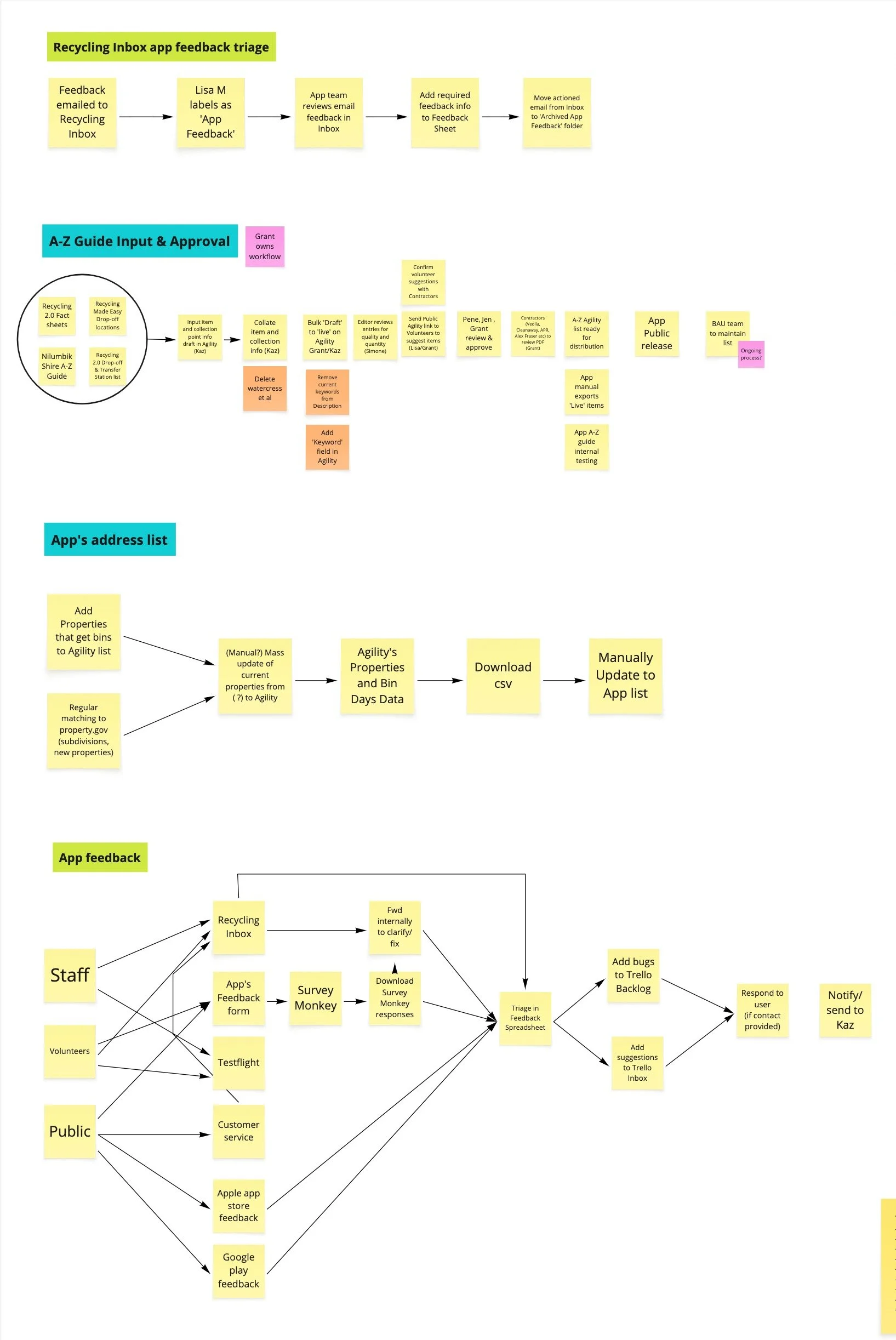Using co-design to support residents to embrace change
As one of the first Victorian councils to implement a 4-bin waste & recycling service, Hobsons Bay City Council identified the need for a digital tool to drive residents' behavior change and support transition to a new service.
The shifting requirements of the initiative as part of a state-wide reform demanded a flexible and agile approach, as well as an omni-channel community engagement strategy. To achieve this, council co-designed a mobile app with residents to ensure a solution that matches their needs and supports improved recycling behaviours over time.
ROLE: EXPERIENCE DESIGNER
How I added value
Conducting desktop research, social listening to gain a baseline knowledge of the context and opportunities
Facilitating community engagement workshops, feedback channels and conducting qualitative interviews to align with community expectations and needs
Collaborating closely with key stakeholders to map existing processes and prioritise solutions
End-to-end design, testing, and delivery of an inclusive and accessible MVP app
Providing continuous updates on progress, including risk assessments, to relevant stakeholders through formal briefing channels
The biggest challenge
Balancing scope, needs and expectations
The sudden and many different challenges during the pandemic required us to adapt our engagement methods to maintain broad engagement across the community. There was also impact on service rollout as residents’ daily lives rapidly changed. I took this opportunity to support project members in adapting to a remote and more digital ways of working, and introduced remote customer engagement methods to deliver the project goals. I facilitated remote stakeholder workshops and updates to ensure realistic expectations about the scope of features and delivery times.
The process
Working closely with stakeholders across council I facilitated ideation and engagement workshops with residents. I maintained open feedback channels with various resident groups which built a sense of trust and increased confidence in the new service. Regular alignment with key stakeholders ensured consistency with other service resources, and a balance between resident feedback with project priorities.
To ensure the tool’s long-term sustainability, a content management process was recommended through close collaboration with the Communications team.
Which bin, why and what instead?
The new waste and recycling service required a rapid and big change to residents’ habits and everyday routine that proved challenging for some. As service requirements differ between councils, residents felt confused with the competing information available and intimidated by the knowledge required to sort their everyday bins.
To help residents quickly identify how to sort items at the disposal point, the “Which bin?” itemised search feature was designed through various iterations with residents. The information provided evolved from informative to actionable as it provides information on disposal guidance and alternative disposal options.
A single source of truth to centralise processes and increase efficiency.
One of the challenges was that key information about the service was managed by different Council teams. As the service was constantly improving, the information available was also constantly updated which at times led to residents receiving conflicting information.
To address this problem, I worked with various teams across council to create one main database for the “Which bin?” feature. This database is used by the app to access information, and by council teams to manage the item information. It also allowed the release of this feature as a web app, which gave residents a choice if they cannot or prefer not to use the mobile app.
Service progress and recycling tips to encourage trust and transparency
Through feedback and social listening, it was apparent that residents wanted to know the impact of the new service and their changed habits
“What difference…” feature provides residents access to a user-friendly and easy to understand version of the regularly published service reports. They now have the flexibility to stay informed without searching through various documentations or attending council meetings.
Inspired by online resident forums, I designed the Recycling tips feature to connect residents supporting each other with actionable tips for a sustainable lifestyle.
The outcome
A shared sense of ownership and a tool that drives real behaviour change.
Recycling 2.0 app was launched after three months of co-design & development and iterated based on resident feedback and analytics. Residents can use it to know their weekly bin schedules and improve their kerbside recycling knowledge. For engaged residents, it includes community sourced tips and statistics to show the value of the new service.
In the first year the app achieved 6,500+ downloads and the project was awarded Highly Contended in the Customer Experience Achievement of the Year category at the Municipal Association Of Victoria Awards 2021.








